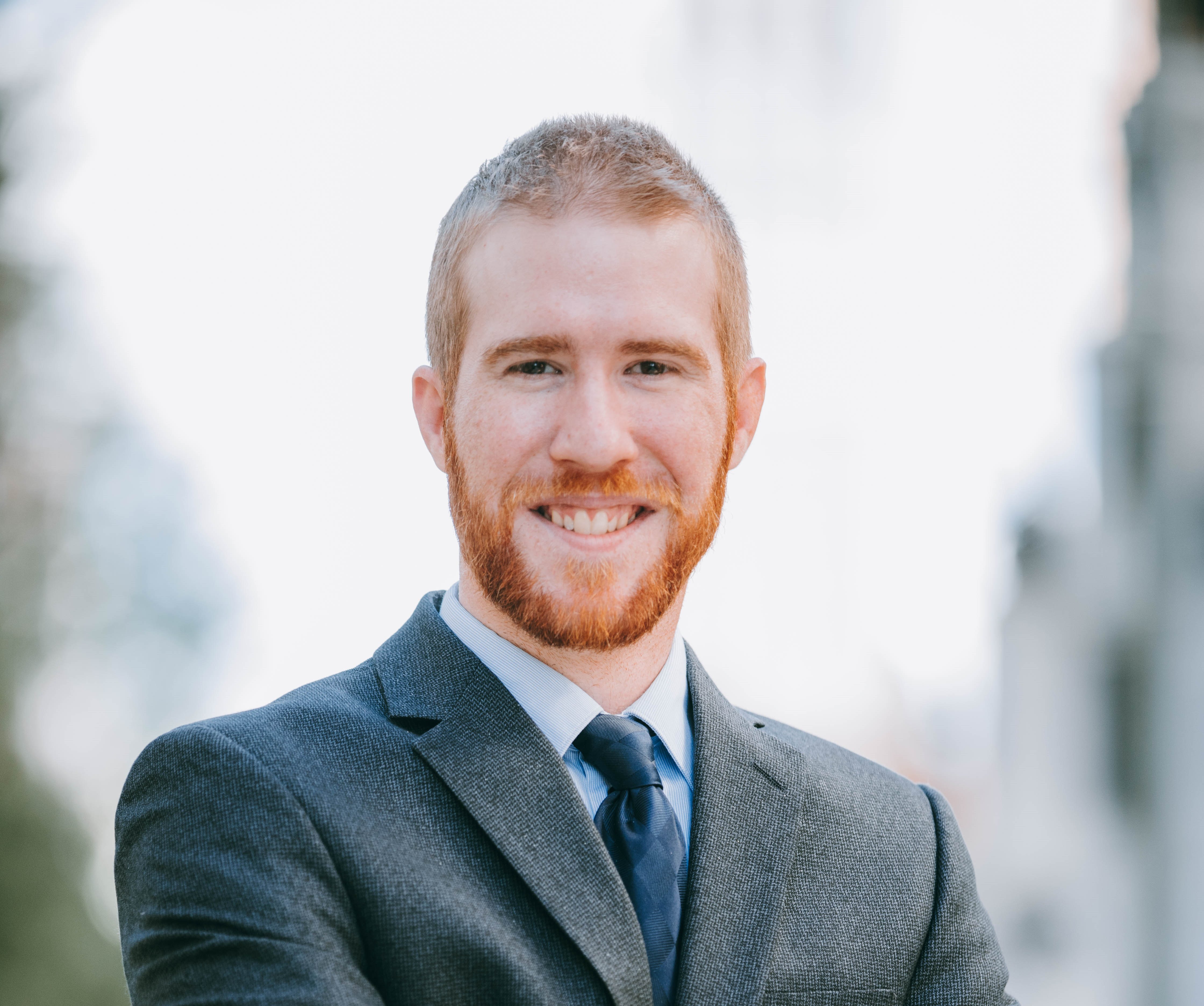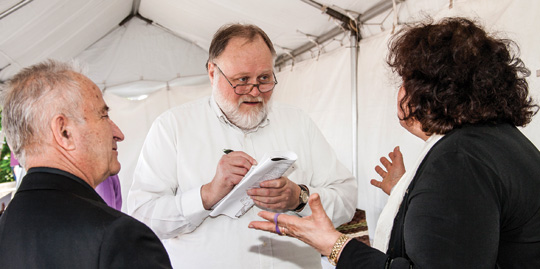Robert Delaney retires after 22 years with newspaper
Detroit — What Robert Delaney will remember most from his days as a Michigan Catholic reporter, he says, are the hundreds and hundreds of “wonderful people” he met along the way.
And that doesn’t surprise his current and former colleagues. Delaney doesn’t forget much.
Whether it’s the people or some arcane fact about a long-ago event — and all the history in between — Delaney has always impressed his confreres with his steel-trap memory.
“He was always the ‘go-to’ person for any question under the sun — and beyond,” said Michelle Samartino, who worked with Delaney as a staff reporter for the paper from 1993-2005. “Before the days of MapQuest and GPS, I could ask Bob for directions anywhere in the city when I needed to head out for a story interview, and he would know it off the top of his head.”
Delaney, 62, the longtime Michigan Catholic reporter whose knowledge, persistence and ability to tell compelling stories brought the news of the Archdiocese of Detroit to thousands of Catholic households every issue, is bringing to a close a 22-year career with the paper, one he says unequivocally was “the best job that I’ve ever had.”
“I think I came in contact with at least a few people who were probably living saints,” Delaney said in an interview during the final weeks before his June 1 retirement, citing the late Servant of God Fr. John Hardon, SJ, as an example. “The high points were very high indeed.”
Delaney’s career at The Michigan Catholic, which began in 1991, included witnessing and reporting on two papal transitions, a new archbishop and hundreds of Masses, events and life-changing stories about the day-to-day faith lives of local Catholics and missionaries abroad — including visits to more than a half-dozen countries — but his proudest moments were breaking news even the mainstream press didn’t seem to see.
Getting the message across
That included a groundbreaking expose on the prevalence of gangs in southwest Detroit in the early 1990s and how their presence affected inner-city residents, parishes and schools.
“We really brought the whole situation of those gangs to light,” Delaney recalled, adding that local radio, television and daily newspapers picked up on the stories after The Michigan Catholic’s reporting. “And this was at a time when the mayor was denying that there were any gangs in Detroit and was about to disband the gang squad from the police department. And so we actually broke real ground as far as the understanding of that situation.”
Jay McNally, The Michigan Catholic’s editor at the time, credited Delaney with finding the story.
“The police department denied they existed, but Bob did basic ‘on the street’ reporting and got quotes from teachers and kids who explained the gang culture to him. It was an amazing accomplishment for a small Catholic weekly operating in the shadow of major dailies that had hundreds of reporters.”
Cardinal Adam J. Maida, Detroit’s archbishop emeritus who worked regularly with Delaney over the years, called him a “gifted and talented writer” and “a wonderful friend.”
“He was very insightful, he was very wise and he was very dedicated in this unique work as a writer,” Cardinal Maida said. “I just have nothing but the highest admiration for Bob Delaney and the integrity with which he reported the news. Sometimes the stories were difficult, but he was honest and truthful, but yet he always got the message across. And certainly we’re very grateful for his wonderful, dedicated years of service to the archdiocese.”
‘Our newsroom Google’
McNally, who hired Delaney more than two decades ago from the News-Herald in Southgate because of his “broad range of talent as a reporter, editor, grammarian, AP stylist, all-around newsroom Mr. Fixit and Expert on All Things Worth Knowing,” called Delaney “our newsroom Google” for his ability to remember even the most minute details.
“All of us — there might be five reporters all typing away in the newsroom on deadline — might ask out loud about the spelling of some obscure word, the date of some barely known battle or speech, or about some esoteric doctrine that came up in an encyclical. Bob always knew the answer to our toughest questions,” McNally said.
Samartino agreed. “I recall constantly telling him that trivia game shows — especially Jeopardy — were right up his alley and were designed for people like him in mind. I hope in his retirement that he takes advantage of that,” she joked.
He might as well. Delaney, who has a master’s degree in economics, says he plans to take up part-time teaching in retirement and hopes to pursue scholarly research on the decline of great American cities such as Detroit to help better understand what might be done to revive them. A freelance theater critic in his spare time, he’ll also continue to write play reviews for the New Monitor, a weekly publication in Detroit.
But what he’ll enjoy the most, he said, is “sitting on my porch in nice weather, reading a book with a pitcher of iced tea at my side.”
Pressed to identify a favorite assignment over the years, Delaney said it would be difficult to name even a top five.
“I’m remembering Fr. Livius Paoli, the Benedictine monk who was pastor for so many years of St. Scholastica (in Detroit). I’m remembering Sr. Nancy Lee Smith, the IHM sister who is an iconographer, trained in the Russian Orthodox style of iconography who’s produced such beautiful work,” he said, naming just a few.
Benedictine and cappuccino
It was Fr. Paoli who gave Delaney a story he often tells colleagues and others he meets. Visiting St. Sylvester Monastery in Detroit one day for a story on Fr. Paoli’s mosaic work, the monk asked Delaney to stay for lunch.
“So I had lunch in the refectory with Fr. Livius and several other Benedictines who were in residence at the time. And at the end of the meal, they broke out a bottle of Benedictine liqueur, and so we were drinking Benedictine for a while, and when I left they sent the bottle home with me,” Delaney said. “But it gave me the ability to quip that I had the experience of sitting around a Benedictine monastery with Benedictine monks drinking Benedictine.
“I embellished this later by saying I was only sorry that when I had lunch at the Capuchin monastery, that they didn’t serve cappuccino — so that I could say I sat around a Capuchin monastery with Capuchin friars drinking cappuccino,” he said.
“We just had regular coffee, so I couldn’t say that.”
Credit where it’s due
On the future of Catholic journalism, Delaney said he hopes to see committed Christians take a larger role in the prevalent discussions of the day. He said outfits like EWTN and The Michigan Catholic have made a difference — and a critical one to today’s Church.
“Especially considering that some in the general media are ignorant of or actively hostile to the message and the presence of committed Christians, I think there needs to be a greater understanding of the importance of Christian media,” he said.
In his later years at the paper, Delaney’s name became synonymous with The Michigan Catholic itself, said Joe Kohn, public relations director for the archdiocese and a former Michigan Catholic reporter and editor.
“After a while people would call up and instead of asking whether The Michigan Catholic could come and do a story, it was ‘Can Bob Delaney come do a story?’” Kohn said.
But Delaney credits those he worked with as much as they credit him.
“I had the pleasure of working with some wonderful colleagues here at The Michigan Catholic and it turned out to be a pretty good career, a pretty good position to have and lots of memorable experiences,” he said.











